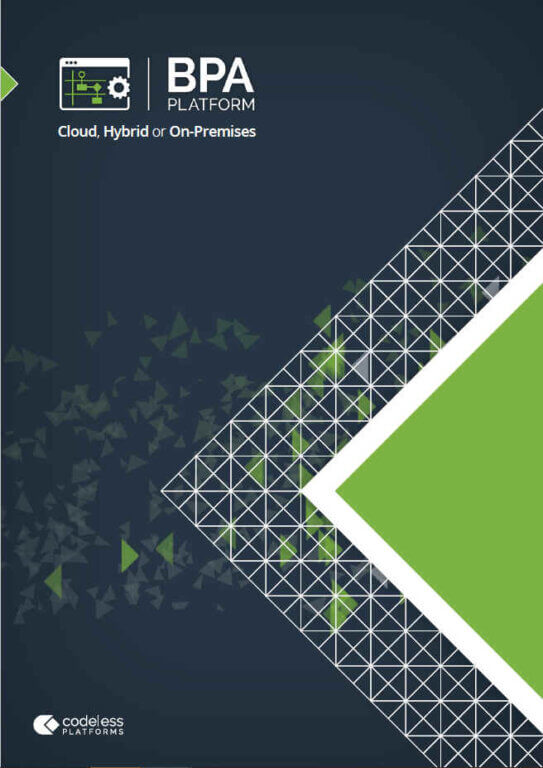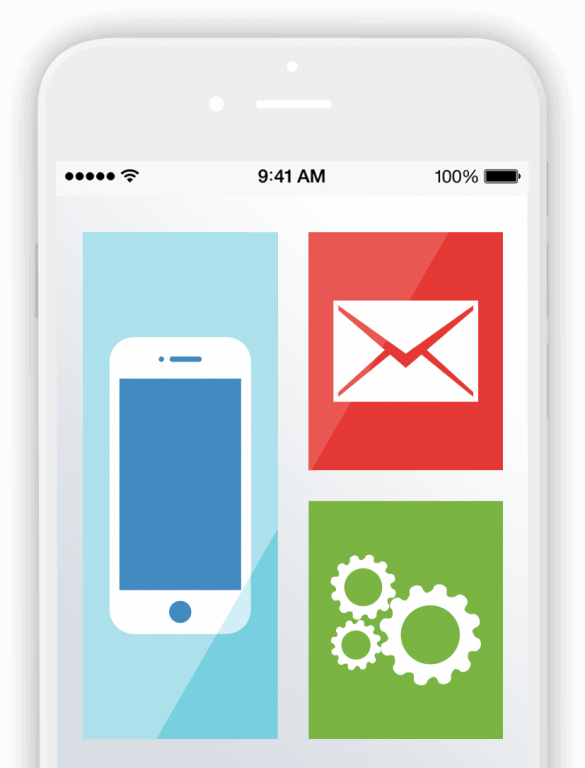- What is business activity monitoring software?
- Frequently Asked Questions
What is business activity monitoring software?
Business activity monitoring software is an application that can monitor multiple data sources, identify changes in data to the specific business rules of an organisation and trigger the delivery of information via multiple communication methods in real-time.
The monitoring of and reporting on business processes, and subsequent performance indicators, is now a critical area for organisations embarking on a digital transformation programme.
Is BAM just more software jargon?
Business activity monitoring software, as an industry term, was first coined by one of the world’s leading research and advisory companies, Gartner Inc. March 2002. Many of the early entrants to the BAM arena are now world leaders within the business process automation (BPA) and business process management (BPM) sectors whilst other BAM ISVs were acquired by industry specific applications, e.g. ERP, CRM, WMS, for their intelligent monitoring and alerting capabilities. The need for BAM software has not disappeared from the CTO’s agenda, but more often than not it has fallen into other more specific architectural programmes, such as risk management.
What are the key components of a business activity monitoring tool?
In short, BAM or business activity monitoring software is governed by the rule of three: data, rules and the presentation of information.
There are three key components of a business activity monitoring tool:
- The ability to monitor multiple data sources and formats, e.g. databases, flat files, web services, EDI
- A configurable rules engine that allows an organisation to assign conditions to the data it is monitoring e.g. the irregular changing of bank account sort codes in a finance systems
- An event driven architecture that can identify data changes to business rules and present that information in a consumable manner, e.g. dashboards, email alerts, SMS messages, Word documents, report engines (Crystal Reports, MS Word, SSRS etc.) fax, EDI, database application updates, data warehouse refreshes for BI analysis, and many other information consumption platforms
Business activity monitoring examples
The Chief Technical Officer or business process analyst within an organisation will initially look for business activity monitoring examples to make the business case for the adoption of IT process automation (ITPA) tools or business activity monitoring software. However, this is why up to 29% of BAM projects fail to achieve the objective of process governance and optimisation. But why is this? The main reasons are:
- Organisations fail to identify their own unique data sources that influence their end-to-end processes
- Performance indicators that are monitored by the BAM project are left to the IT department to be identified rather than gathering input for specific business units or managers
- Organisational structures are too bureaucratic to deal with the provision for real-time decision making
- BAM projects don’t evolve in line with company processes. BAM software is a form of middleware so can often be forgotten as an interface to the reporting components
Business activity monitoring dashboard: BAM dashboard examples
BAM dashboards are a core component of business process monitoring solutions and display an overview of real-time and current business information. Common business activity monitoring dashboards include:
Stock Level Dashboards
Stock level dashboards are very common amongst organisations that trade both online and through retail outlets.
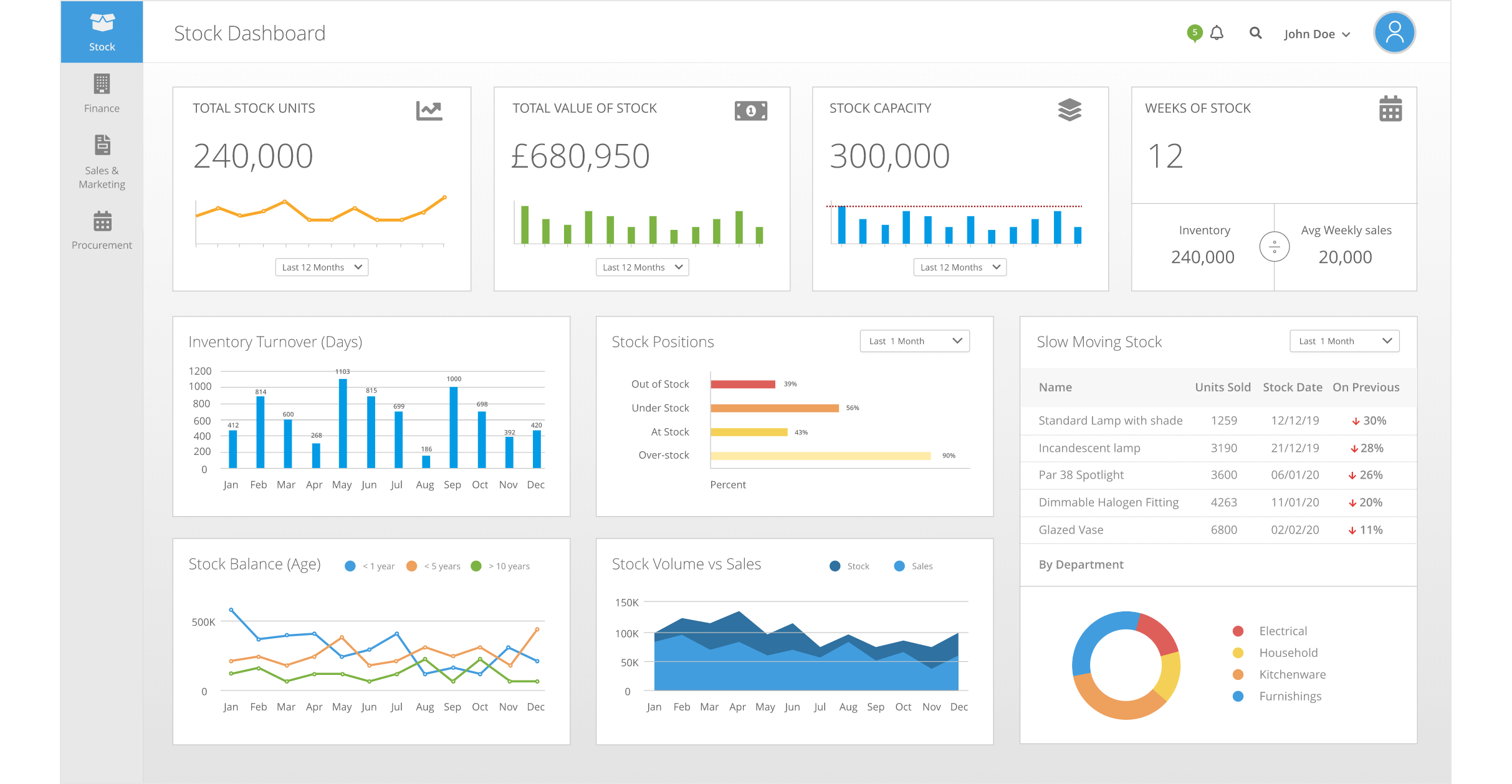
Accounting and Finance Dashboards
Accounting and finance dashboards are a critical asset to accounting and finance teams to receive a summary of financial transactions and statuses.
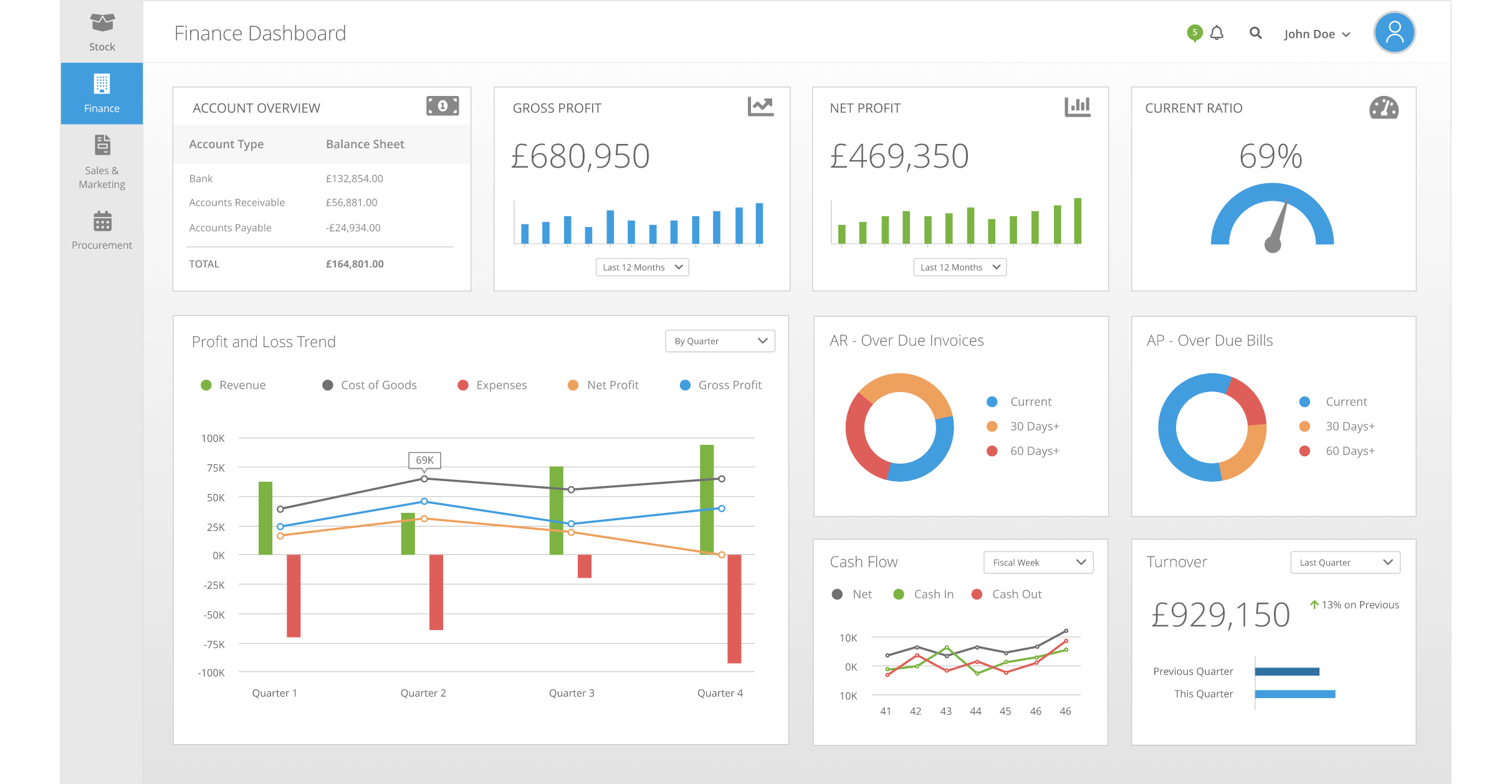
Sales and Marketing Dashboards
Sales and Marketing dashboards are essential for organisations to quickly access KPIs, monthly sales figures and pipelines in real time.
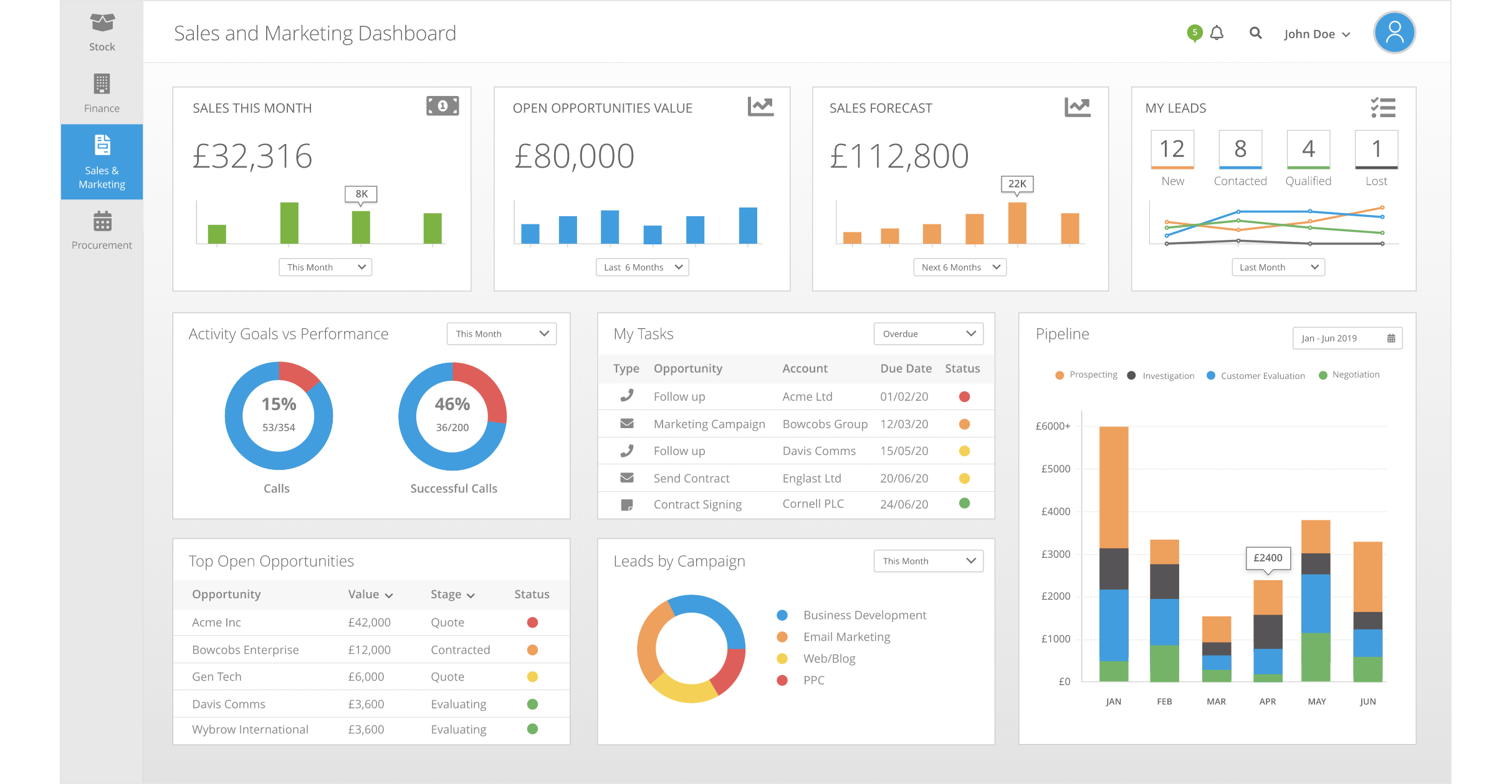
Procurement dashboards
Procurement dashboards are used to highlight company spend, procurement cycles and supplier information.
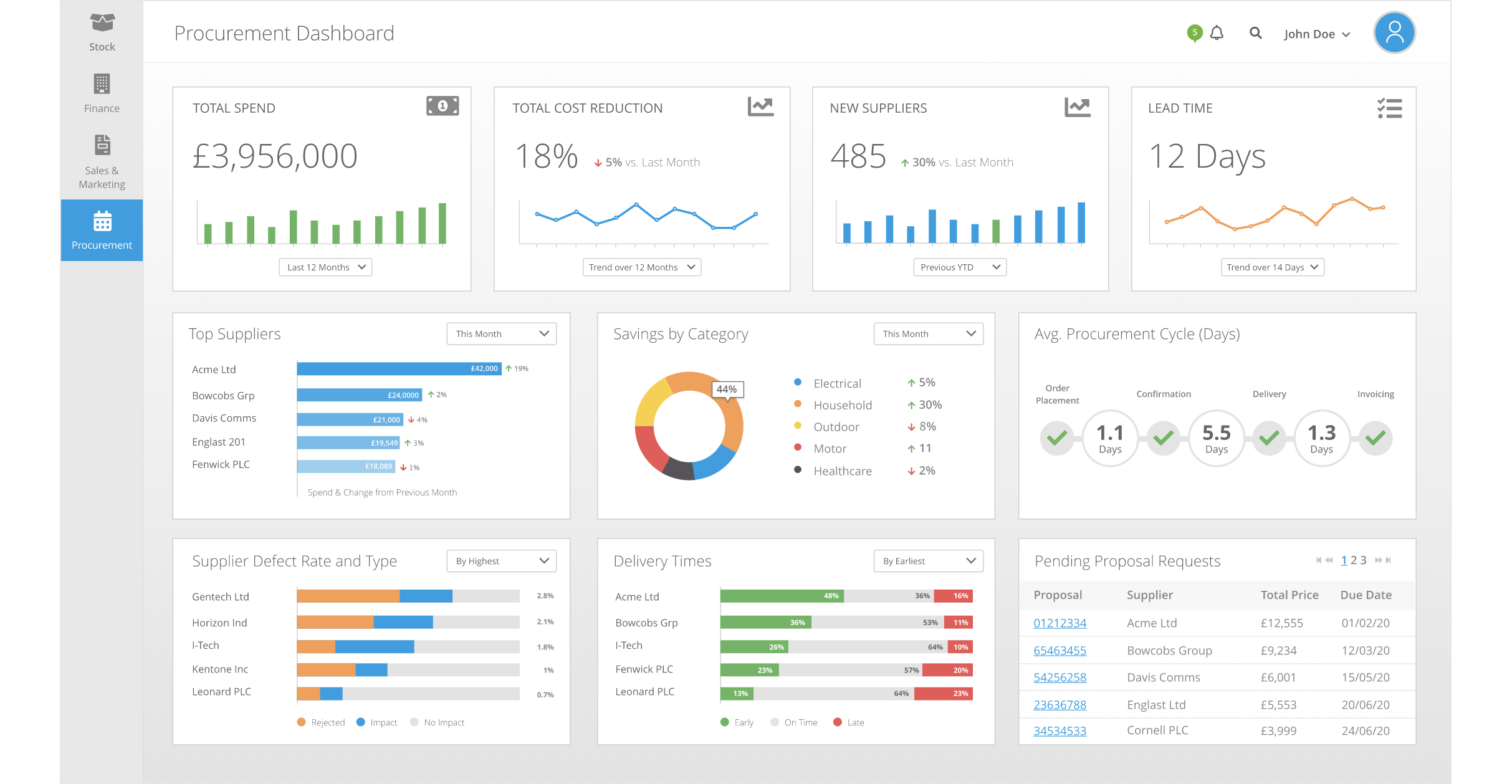
Rules-driven alerts and reports
BAM dashboards are the main go-to for organisations wanting a mechanism to report on business process activities. However, more sophisticated BAM solutions will offer other means of ‘as it happens reporting’ or ’employee nudging’. Typical examples include:
Alerts and Notifications
Data triggered email or SMS notifications are a great way to monitor, enforce and action day-to-day employee tasks that drive overall performance indicators. Examples of monitoring and alerting include:
- Stock running low
- Aged debtors totalling X
- Unauthorised discount applied to a transaction
- Monitoring sensitive data, e.g. bank sort codes for changes
- Compliance procedure not complete
Report Automation
Day-to-day reporting is a time-consuming, repetitive exercise, but deploying a business activity monitoring (BAM) software solution can ensure employees focus on the achievement of performance indicators and spend less time watching out for potential failings. Common automated reports include:
- Financial reports
- Department budget against actual reports
- Sales reports
- Marketing reports
- Stock management reports
What are the benefits of BAM software?
The benefits of BAM software are unique to the organisation and their business objectives, but more overarching benefits include:
- Real-time identification and notification of business risks and successes across all departments and systems
- Stronger decision making through the delivery of information from multiple internal and external business applications
- The enforcement of company practices and procedures without creating costly administration for departments and employees
- Removal of errors caused by the lack of real-time information
How much does BAM software cost?
The monitoring of business processes will play a very important role in the success of an organisation competing in a global environment. Speed is a critical success factor, not just to large enterprises but to smaller businesses as well.
The questions you should ask yourself before you consider purchasing BAM software:
- Will investing in automation reduce your costs and/or speed up your processes?
- Are your competitors automating their business processes?
- Can your customers move to another supplier easily if you get the basics wrong?
If you have answered yes to either one or more of the above you should conduct the following audit before contacting a BAM software provider:
- Document all the database applications your organisation utilises
- Document all the other data sources you may also want to monitor
- Ask company departments what KPIs should be monitored and why
- Decide which business processes to monitor first and why. Place them in order of importance to the performance of the organisation
- Decide on which employee(s) will be responsible for the ongoing management and development of the BAM project
- Identify which business process should be fully automated rather than monitored and actioned by employees
Conclusion
Business activity monitoring (BAM) as a technology emerged in 2002 and since that date the larger providers have evolved into pure play BPA or BPM platforms. When combined with BPA software, BAM can deliver significant cost saving and productivity gains to any sized organisation.
Organisations should be careful to not just copy what other organisations have used BAM software for, but clearly document the processed and performance indicators that are useful to their specific business.
With a planned approach to a BAM project organisations can create a real-time, responsive organisation that is fit for modern commerce.
For more information on how business activity monitoring software can monitor and report on business processes, download the brochure below or call us on +44 (0) 330 99 88 700.
